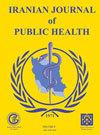The Association between Four Common Polymorphisms in microRNA and Risk of Hepatocellular Carcinoma: An Updated Meta-Analysis
IF 1.4
4区 医学
Q3 Medicine
引用次数: 0
Abstract
Background: Many epidemiological studies have explored the relationship between single-nucleotide polymorphism and hepatocellular carcinoma (HCC). However, the results remain controversial. We performed a large-scale meta-analysis to draw a more precise estimation of the aforementioned association. Methods: Studies on the association between microRNA (MIR) polymorphisms and HCC risk that had been published up to Sep 30, 2021 were identified by searching the PubMed, Cochrane Library, Google Scholar, Web of Science, and Chinese Biomedical Literature electronic databases and the Excerpta Medical Database. The association between MIR polymorphisms and HCC risk was assessed using odds ratios (ORs) and their 95% confidence intervals (CIs). Results: Overall, 29 studies, with a total of 9,263 cases and 10,875 controls, were included in our meta-analysis. MicroRNA149 (MIR149) significantly decreased the risk of developing HCC on the overall population (homozygous model CC vs. TT: OR = 0.703, 95% CI = 0.549-0.899, P = 0.005), and microRNA 196 (MIR196) significantly decreased the risk of developing HCC on the overall population (recessive model TT vs. CT+CC: OR = 0.864, 95% CI = 0.751-0.993, P = 0.04) and on Caucasians (OR = 0.613, 95% CI = 0.414-0.907, P = 0.014). Conclusion: The MIR149 and MIR196 polymorphisms are the protect factors of developing HCC. The conduct of multi-center and multi-region studies with gene-gene, gene-environment should be considered.microRNA四种常见多态性与肝细胞癌风险之间的关系:一项最新的荟萃分析
背景:许多流行病学研究已经探讨了单核苷酸多态性与肝细胞癌(HCC)的关系。然而,研究结果仍然存在争议。我们进行了大规模的荟萃分析,以对上述关联进行更精确的估计。
方法:通过检索PubMed、Cochrane图书馆、Google Scholar、Web of Science、中国生物医学文献电子数据库和摘录医学数据库,对截至2021年9月30日已发表的关于microRNA (MIR)多态性与HCC风险相关性的研究进行筛选。使用比值比(ORs)及其95%置信区间(ci)评估MIR多态性与HCC风险之间的关系。结果:我们的荟萃分析纳入了29项研究,共9263例病例和10875例对照。MicroRNA149 (MIR149)显著降低了总体人群发生HCC的风险(纯合子模型CC vs. TT: OR = 0.703, 95% CI = 0.549-0.899, P = 0.005), microrna196 (MIR196)显著降低了总体人群发生HCC的风险(隐性模型TT vs. CT+CC: OR = 0.864, 95% CI = 0.751-0.993, P = 0.04)和高加索人群发生HCC的风险(OR = 0.613, 95% CI = 0.414-0.907, P = 0.014)。结论:MIR149和MIR196基因多态性是HCC发生的保护因素。应考虑开展基因-基因、基因-环境的多中心、多区域研究。
本文章由计算机程序翻译,如有差异,请以英文原文为准。
求助全文
约1分钟内获得全文
求助全文
来源期刊

Iranian Journal of Public Health
医学-公共卫生、环境卫生与职业卫生
CiteScore
2.20
自引率
7.10%
发文量
0
审稿时长
2 months
期刊介绍:
Iranian Journal of Public Health has been continuously published since 1971, as the only Journal in all health domains, with wide distribution (including WHO in Geneva and Cairo) in two languages (English and Persian). From 2001 issue, the Journal is published only in English language. During the last 41 years more than 2000 scientific research papers, results of health activities, surveys and services, have been published in this Journal. To meet the increasing demand of respected researchers, as of January 2012, the Journal is published monthly. I wish this will assist to promote the level of global knowledge. The main topics that the Journal would welcome are: Bioethics, Disaster and Health, Entomology, Epidemiology, Health and Environment, Health Economics, Health Services, Immunology, Medical Genetics, Mental Health, Microbiology, Nutrition and Food Safety, Occupational Health, Oral Health. We would be very delighted to receive your Original papers, Review Articles, Short communications, Case reports and Scientific Letters to the Editor on the above mentioned research areas.
 求助内容:
求助内容: 应助结果提醒方式:
应助结果提醒方式:


